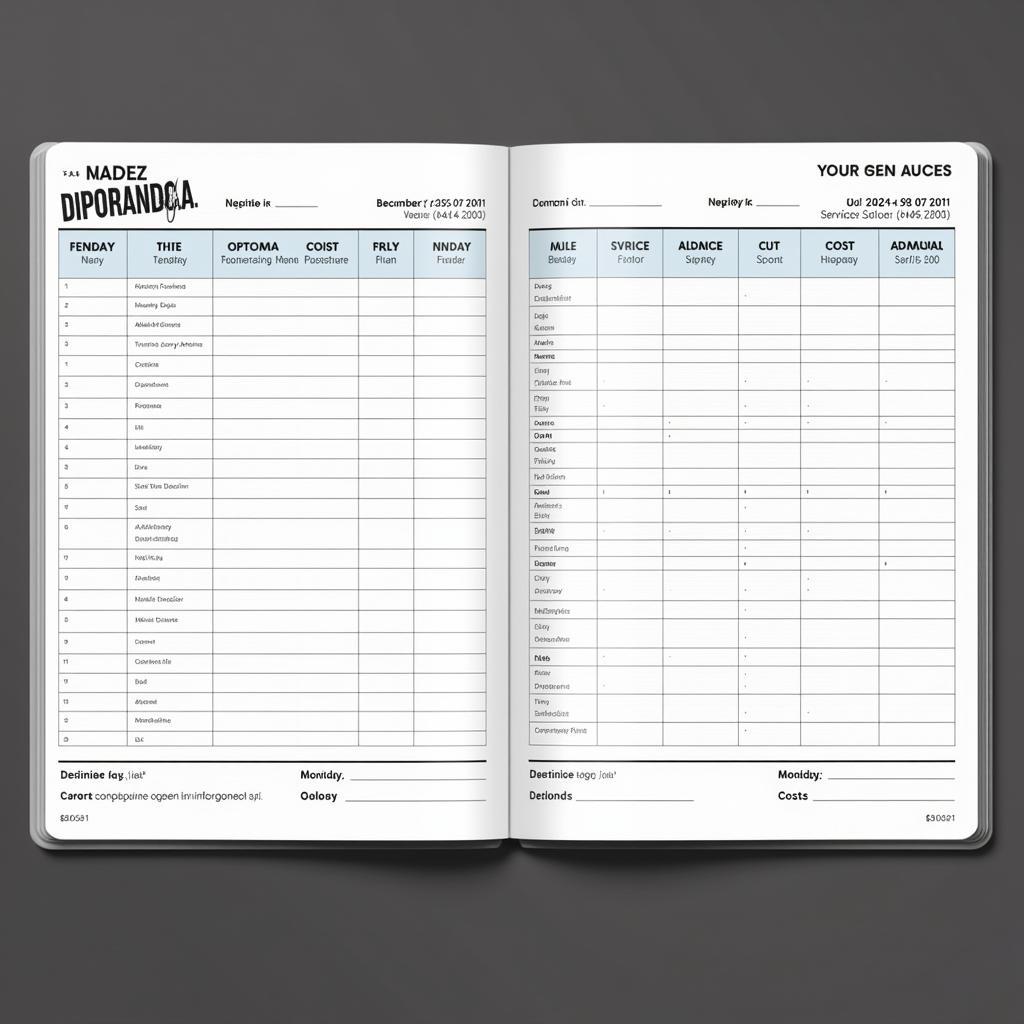Diy Car Maintenance Records are essential for any car owner looking to save money, maintain their vehicle’s value, and ensure its longevity. Keeping detailed records allows you to track repairs, predict potential issues, and provide valuable information to mechanics or potential buyers. This comprehensive guide will walk you through everything you need to know about establishing and maintaining effective DIY car maintenance records.
Why Keep DIY Car Maintenance Records?
Keeping meticulous DIY car maintenance records isn’t just about being organized; it’s about being proactive and informed about your vehicle’s health. Think of it as a health journal for your car. Just as you track your medical appointments and medications, tracking your car’s maintenance provides a clear picture of its past, present, and potential future needs. These records offer several key benefits:
- Saving Money: By tracking regular maintenance, you can avoid costly repairs down the line. Catching small issues early prevents them from developing into major problems.
- Increased Resale Value: A well-documented maintenance history significantly increases the resale value of your vehicle. It provides potential buyers with the confidence that the car has been properly cared for.
- Warranty Claims: In case of warranty issues, having detailed records can help streamline the claims process and ensure you receive the coverage you deserve.
- Improved Mechanic Communication: Providing your mechanic with a comprehensive history of repairs and maintenance allows them to diagnose issues more efficiently and accurately.
 DIY Car Maintenance Record Logbook
DIY Car Maintenance Record Logbook
Getting Started with DIY Car Maintenance Records
So, how do you actually start keeping track of all this information? It’s easier than you might think. Here are a few simple steps to get you started:
- Choose a Format: You can use a simple notebook, a spreadsheet, or a dedicated car maintenance app. The key is to choose a method that you find easy to use and maintain consistently.
- Record Basic Information: Start by recording basic information about your car, including the make, model, year, VIN, and current mileage.
- Document Every Service: Every time you perform maintenance or have repairs done, record the date, service performed, mileage, parts used, and cost. Be as specific as possible.
- Keep Receipts: Keep all receipts for parts and labor. These serve as proof of purchase and can be helpful for warranty claims or when selling your car.
What to Include in Your DIY Car Maintenance Records
Beyond the basics, here are some additional details to include in your DIY car maintenance records to make them even more valuable:
- Fluid Changes: Note the type of fluid used (e.g., synthetic or conventional oil), the brand, and the date of the change.
- Tire Rotations and Replacements: Record the date of rotation or replacement, the tire size, and the brand.
- Brake Service: Document brake pad replacements, rotor resurfacing or replacement, and brake fluid changes.
- Battery Replacements: Record the date of replacement and the battery brand and specifications.
- Other Repairs: Include details about any other repairs, such as belt replacements, alternator repairs, or suspension work.
“Accurate and detailed car maintenance records are a game-changer,” says Johnathan Davis, a seasoned automotive technician with over 20 years of experience. “They help mechanics diagnose problems faster, saving time and money for both the mechanic and the car owner.”
Tips for Maintaining DIY Car Maintenance Records
- Be Consistent: The most important aspect of keeping DIY car maintenance records is consistency. Make it a habit to update your records after every service or repair.
- Stay Organized: Use a clear and consistent format to keep your records organized and easy to read.
- Back Up Your Records: If you’re using a digital format, be sure to back up your records regularly to prevent data loss.
Leveraging Your DIY Car Maintenance Records
Beyond the immediate benefits, your DIY car maintenance records can also be incredibly useful in the long run. When it’s time to sell your car, these records can be a powerful selling point. They demonstrate to potential buyers that you’ve taken good care of the vehicle and can help justify a higher asking price.
“When I’m looking to buy a used car, the first thing I ask for is the maintenance history,” says Sarah Miller, an avid car enthusiast. “A complete set of records gives me peace of mind and shows me the owner has been responsible.”
Conclusion
DIY car maintenance records are an invaluable tool for any car owner. They empower you to take control of your vehicle’s health, save money on repairs, and maximize its resale value. By following the tips outlined in this guide, you can easily establish and maintain a comprehensive record-keeping system that will benefit you for years to come. For personalized assistance with your car maintenance needs, connect with AutoTipPro at +1 (641) 206-8880. Our office is located at 500 N St Mary’s St, San Antonio, TX 78205, United States. We’re here to help you keep your car running smoothly!





Leave a Reply